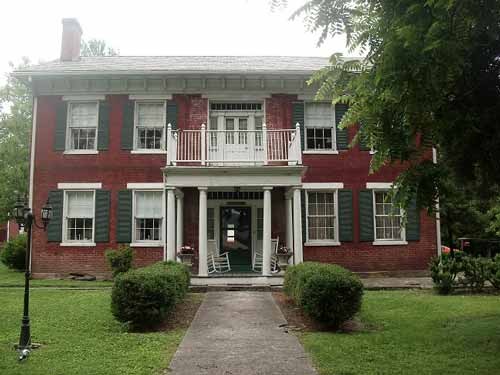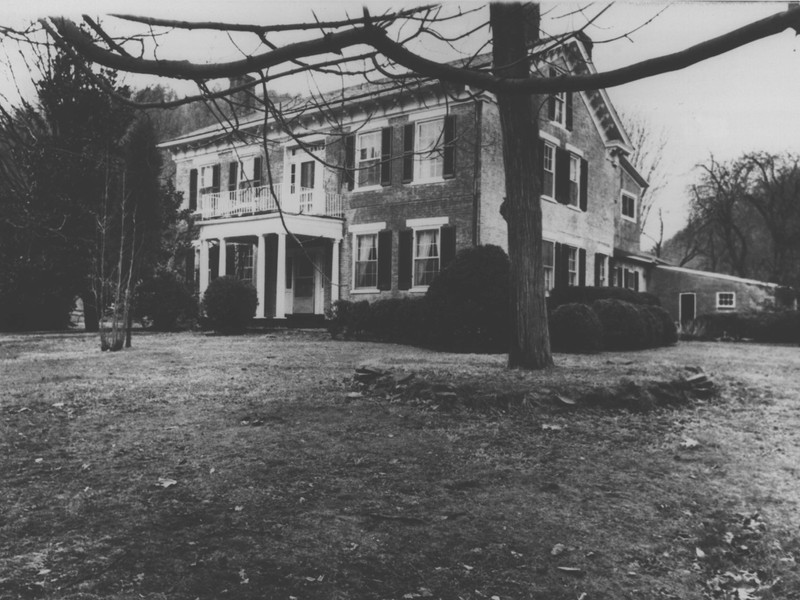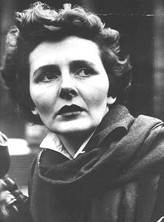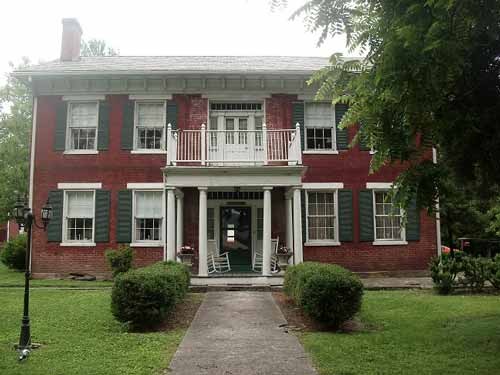Cedar Grove (William Tompkins House)
Introduction
Author-Uploaded Audio
Listen to a narration of this entry's description by Eliza Kolander.
Text-to-speech Audio
Images
Cedar Grove, today.

Photograph from the National Register nomination form, taken in 1975.

Well-known West Virginia writer, Mary Lee Settle (1918 – 2005), is a descendant of the Tompkins. She spent summers at Cedar Grove. Her books are grounded in the reality of her ancestral home.


Backstory and Context
Author-Uploaded Audio
Listen to a narration of this entry's description by Eliza Kolander.
Text-to-speech Audio
Cedar Grove stands as a tribute to the growth of the Kanawha Valley prior to the Civil War. This growth was largely due to the salt industry—an industry powered by rented slaves from Eastern Virginia. The home is a two story, five bay, “double pile” rectangular brick house. When built, it had upper and lower verandas across the rear, but they were both enclosed around 1890. There is a small entrance portico with a second floor balcony.
The home was built by William Tompkins, who moved to the Kanawha Valley around 1818. He joined his brother-in-law, Aaron Stockton, in a salt business and soon gained some advantage and prestige by developing several improvements in drilling techniques. Around 1841, Tompkins became the first person in the region to use natural gas as the fuel to extract salt from saltwater (previously coal or wood were used). Many believe that this was the first time that natural gas was used for industrial purposes.
During the Civil War, Cedar Grove withstood the pressures of passing Confederate and Union troops, despite being on an important route. This is explained by the fact that Mrs. Tompkins was an aunt of Ulysses S. Grant and possessed a letter from his to display to troops.
Despite the letter of support from Grant, the Tompkins were likely Confederate sympathizers; they were slave owners and the house was the seat of a plantation that stretched along the Kanawha River. The bricks that built Cedar Grove were bricks that slaves made by hand. During this time period, thousands of slaves were rented from Eastern Virginia by salt makers like Tompkins and Stockton to do the labor intensive work of making salt.
Well-known West Virginia writer, Mary Lee Settle (1918 – 2005), is a descendant of the Tompkins. Born in Charleston, Mary Lee Settle spent summers at Cedar Grove with her grandmother, Addie Tomkins. For many, Cedar Grove is the imaginative wellspring of her writing.
Mary Lee Settle is the author of 21 books, including The Beulah Quintet — a five volume work of historical fiction that spans two continents and 300 years of American history. Each book is set at a moment of transition, a time right on the edge of deep societal change. Beulah Land, where the novels unfold, is a fictional place grounded in the reality of Settle’s family home place at Cedar Grove, West Virginia. She won the National Book Award in 1978 for her novel Blood Tie.
The home is currently owned by sisters, Shirley Ellis Stennet and Patty Ellis Thurmon. The two ran an elder care home in the house briefly, but now the home is a private residence.
Sources
Cedar Grove Story. Mary Lee Settle. Accessed February 07, 2017. http://www.cedargrovestory.com/mary-lee-settle/.
National Register of Historic Places nomination form. Cedar Grove. Accessed February 07, 2017. http://www.wvculture.org/shpo/nr/pdf/kanawha/75001893.pdf.
